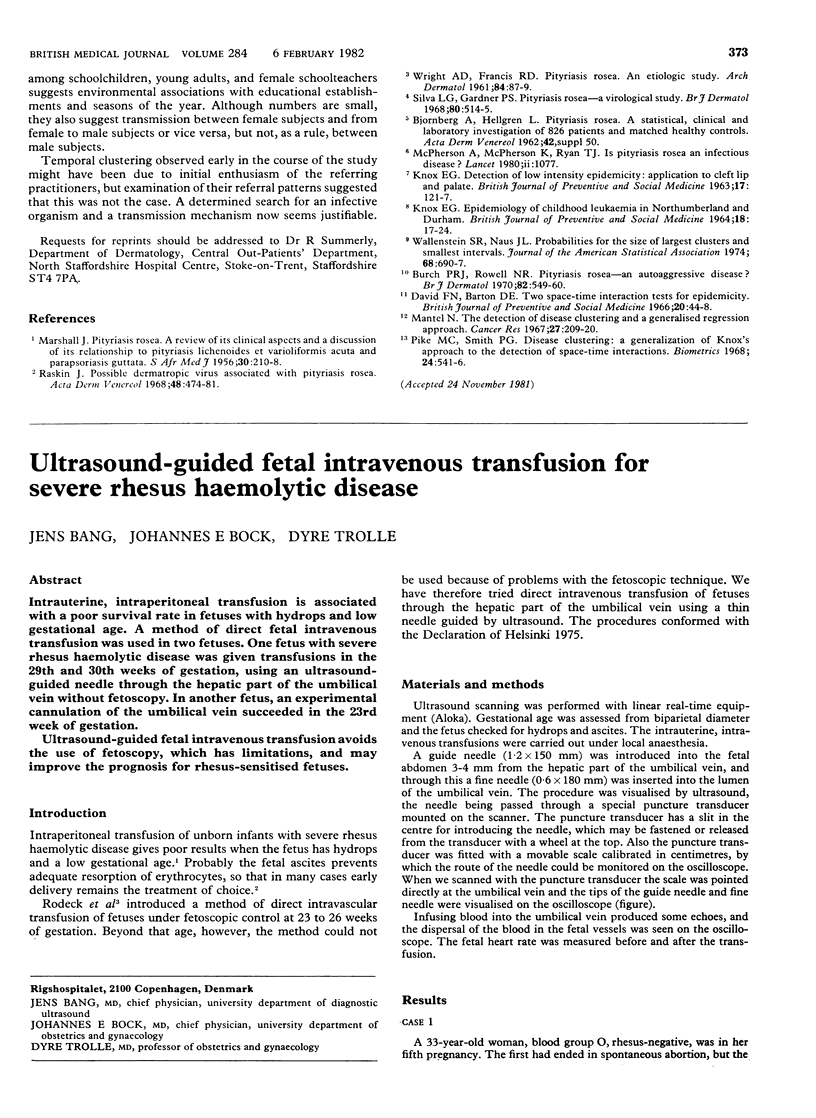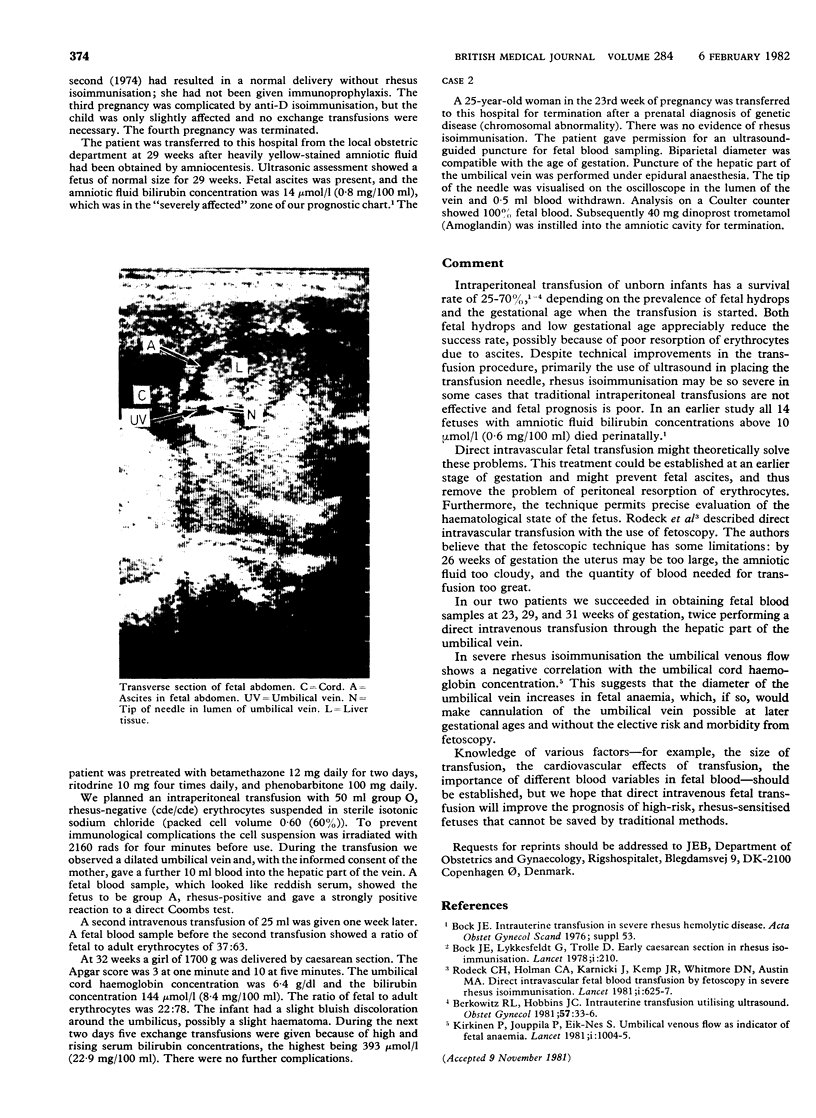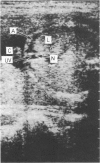Abstract
Intrauterine, intraperitoneal transfusion is associated with a poor survival rate in fetuses with hydrops and low gestational age. A method of direct fetal intravenous transfusion was used in two fetuses. One fetus with severe rhesus haemolytic disease was given transfusions in the 29th and 30th weeks of gestation, using an ultrasound-guided needle through the hepatic part of the umbilical vein without fetoscopy. In another fetus, an experimental cannulation of the umbilical vein succeeded in the 23rd week of gestation. Ultrasound-guided fetal intravenous transfusion avoids the use of fetoscopy, which has limitations, and may improve the prognosis for rhesus-sensitised fetuses.
Full text
PDF

Images in this article
Selected References
These references are in PubMed. This may not be the complete list of references from this article.
- Berkowitz R. L., Hobbins J. C. Intrauterine transfusion utilizing ultrasound. Obstet Gynecol. 1981 Jan;57(1):33–36. [PubMed] [Google Scholar]
- Bock J. E., Lykkesfeldt G., Trolle D. Early caesarean section in rhesus isoimmunisation. Lancet. 1978 Jan 28;1(8057):210–210. doi: 10.1016/s0140-6736(78)90646-3. [DOI] [PubMed] [Google Scholar]
- Kirkinen P., Jouppila P., Eik-Nes S. Umbilical venous flow as indicator of fetal anaemia. Lancet. 1981 May 2;1(8227):1004–1005. doi: 10.1016/s0140-6736(81)91775-x. [DOI] [PubMed] [Google Scholar]
- Rodeck C. H., Kemp J. R., Holman C. A., Whitmore D. N., Karnicki J., Austin M. A. Direct intravascular fetal blood transfusion by fetoscopy in severe Rhesus isoimmunisation. Lancet. 1981 Mar 21;1(8221):625–627. doi: 10.1016/s0140-6736(81)91549-x. [DOI] [PubMed] [Google Scholar]



